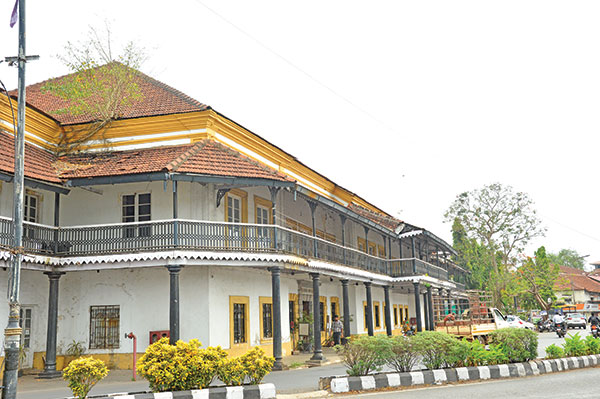
Adil Shah Palace Gateway
Remnant of Pre-Portuguese Islamic Heritage
The Adil Shah Palace Gateway stands as a remarkable testament to Goa's pre-Portuguese Islamic heritage. Built during the reign of Yusuf Adil Shah of the Bijapur Sultanate in the late 15th century, this architectural fragment represents the sophisticated Islamic culture that flourished in the region before Portuguese colonization.
Today, only the ornate gateway remains of what was once a magnificent palace complex that served as the seat of power for the Adil Shahi dynasty in Goa. This surviving structure provides invaluable insights into the Islamic architectural traditions and the political history of medieval Goa.
The Adil Shahi dynasty ruled over the Deccan region from their capital at Bijapur (present-day Karnataka) from 1490 to 1686. Yusuf Adil Shah, the founder of the dynasty, established Goa as an important port and administrative center, building this palace as his residence and seat of governance.
Adil Shahi Period
- • Founded by Yusuf Adil Shah (1490)
- • Strategic port city control
- • Islamic cultural patronage
- • Trade and commerce hub
Architectural Legacy
- • Indo-Islamic style
- • Decorative stonework
- • Geometric patterns
- • Arched doorways
The surviving gateway showcases the distinctive Indo-Islamic architectural style that characterized the Adil Shahi period. The structure features intricate stone carvings, geometric patterns, and pointed arches that reflect the synthesis of Islamic design principles with local building traditions.
The gateway's design demonstrates the sophisticated craftsmanship of medieval Islamic architects and artisans. The use of local laterite stone combined with imported architectural elements created a unique regional variant of Islamic architecture that was both functional and aesthetically striking.
Adil Shahi Rule Begins
Yusuf Adil Shah establishes the Bijapur Sultanate and extends control over Goa, making it an important administrative and commercial center.
Palace Construction
The palace complex is built as the residence and administrative headquarters of the Adil Shahi governors in Goa, featuring Islamic architectural elements.
Portuguese Conquest
Afonso de Albuquerque conquers Goa from the Adil Shahis, and the palace is converted for Portuguese administrative use, later becoming the Secretariat.
Heritage Conservation
The gateway remains as a protected monument, representing Goa's pre-Portuguese Islamic heritage and the multicultural history of the region.
The Adil Shah Palace Gateway holds immense archaeological and cultural value as one of the few surviving examples of Islamic architecture in Goa from the pre-Portuguese period. It provides crucial evidence of the sophisticated Islamic civilization that existed in the region before European colonization.
This monument serves as a reminder of Goa's diverse cultural heritage, demonstrating that the region's history encompasses not just Portuguese colonial and Hindu traditions, but also significant Islamic contributions. It represents the cosmopolitan nature of medieval Goa as a major trading port that attracted various cultures and religions.
Access
Located near the Secretariat Building
Visible from public areas
Best Time
Early morning or late afternoon for photography